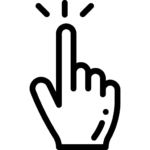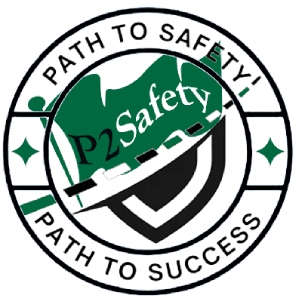SMS 50 Flashcards

1. Internal controls
Internal controls fall into three broad categories: detective, preventative, and corrective. Several internal control frameworks exist to facilitate the implementation of regulatory compliance obligations and enterprise risk management (ERM) best practices.

2. What is the OSHA definition of hazard?
A hazard is the potential for harm (physical or mental). In practical terms, a hazard often is associated with a condition or activity that, if left uncontrolled, can result in an injury or illness. Identifying hazards and eliminating or controlling them as early as possible will help prevent injuries and illnesses.

3. What is the difference between errors and violations?
The fundamental difference between errors and violations is that violations are deliberate, whereas errors are not. In other words, committing a violation is a conscious decision, whereas errors occur irrespective of one's will to avoid them.

4. What are the three 3 types of errors?
Types of Errors
(1) Systematic errors. With this type of error, the measured value is biased due to a specific cause. ...
(2) Random errors. This type of error is caused by random circumstances during the measurement process.
(3) Negligent errors.

5. What is a zero error?
Any indication that a measuring system gives a false reading when the true value of a measured quantity is zero, e.g., the needle on an ammeter failing to return to zero when no current flows. A zero error may result in a systematic uncertainty.

6. What is backlash error?
A backlash error is a motion error that occurs when changing the direction of gears. Backlash error occurs when, after reversing the direction of rotation of the thimble, the tip of the screw does not immediately begin moving in the opposite direction but remains stationary for a portion of the rotation.

7. Orientation Meeting
Introduction to the company, its mission, functions and culture. Review of company organizational chart. Employee handbook review. Benefits plan information, discussion and preliminary enrollment.

8. What are the 4 C's of new employee orientation?
According to Dr. Talya Bauer from the SHRM Foundation, successful onboarding involves proactively covering The Four C's. This stands for compliance, clarification, culture, and connection.

9. What are audit techniques?
Thus far we have considered six auditing techniques: checking, vouching, and analysis, which are used in the examination of internal evidence in the books and records; and counting, observation, and confirmation, which are used to obtain evidence outside the books and records.

10. Which is an important audit technique?
There are many ways to obtain a relevant audit evidence and auditors have to use: Physical examination, Confirmations, Documentation, Analytical Procedures, Inquiries of the Client, Reperformance, Observation. Another major technique used in audit is audit sampling.

11. The four types of auditor opinions
1. Unqualified opinion-clean report.
2. Qualified opinion-qualified report.
3. Disclaimer of opinion-disclaimer report.
4. Adverse opinion-adverse audit report.

12. What is internal audit process?
Internal audit conducts assurance audits through a five-phase process which includes selection, planning, conducting fieldwork, reporting results, and following up on corrective action plans.

13. What are the various techniques of audit evidence?
Audit procedures to obtain audit evidence can include inspection, observation, confirmation, recalculation, reperformance, and analytical procedures, often in some combination, in addition to inquiry.

14. What are the different types of audit tools?
Three main types of auditing tools are there. They are, External audits, Internal audits, and Internal Revenue Service audits.

15. What is audit cycle?
The audit cycle involves five stages: preparing for audit; selecting criteria; measuring performance level; making improvements; sustaining improvements.

16. Definition of Internal Auditing
It helps an organization accomplish its objectives by bringing a systematic, disciplined approach to evaluate and improve the effectiveness of risk management, control, and governance processes.

17. What is internal audit framework?
The Internal Audit Framework details the purpose, objectives and deliverables of Internal Audit and explains the methodology and standards used to achieve independent assurance outcomes.

18. What are the parts of audit?
The audit report template includes 7 parts of elements these are: report title, introductory Paragraph, scope paragraph, executive summary, opinion paragraph, auditor's name, and auditor's signature.

19. What is called audit?
Auditing is defined as the on-site verification activity, such as inspection or examination, of a process or quality system, to ensure compliance to requirements. An audit can apply to an entire organization or might be specific to a function, process, or production step.

20. What are the limitations of internal audit?
Some of the limitations of the internal control system in auditing are: High Cost: The expense of setting up and working an Internal Audit in an association is extravagant. Unsatisfactory for a Small Organization: Internal Audit is not reasonable for small associations because of the inclusion of significant expenses.

21. What are the 4 P's of goal setting?
When establishing goals, it is important to remember the Four P's of goal setting. They need to be positive, personal, possible, and prioritized. When you are creating goals, remember to make sure that they are positive. This means that you focus on what you want to achieve rather than what you want to avoid.

22. What are the 3 R's of goal setting?
R = Rigorous, Realistic, and Results Focused (the 3 Rs).
A goal is not an activity—a goal makes clear what will be different as a result of achieving the goal.

23. What are the five 5 principle of effective goal setting?
In 1990, Locke and Dr. Gary Latham published “A Theory of Goal Setting and Task Performance” in which they identified five principles that were important in setting goals that will motivate others. These principles are: clarity, challenge, commitment, feedback, and task complexity.

24. What is the concept and importance of training?
Training is the process of enhancing the skills, capabilities and knowledge of employees for doing a particular job. Training process molds the thinking of employees and leads to quality performance of employees. It is continuous and never ending in nature.

25. What is training effectiveness?
Training effectiveness measures the impact of training on the trainee's knowledge, skills, performance, and the company's ROI. The training's goals and objectives should be determined before training occurs, allowing these to be clearly and accurately measured.

26. The Prevention through Design (PtD)
The Prevention through Design (PtD) Program seeks to prevent or reduce occupational injuries, illnesses, and fatalities through the inclusion of prevention considerations in all designs that impact workers. “Designing out” occupational hazards and risks is the most effective way to protect workers.

27. safety by design
Prevention through design (PtD), also called safety by design usually in Europe, is the concept of applying methods to minimize occupational hazards early in the design process, with an emphasis on optimizing employee health and safety throughout the life cycle of materials and processes.

28. What are the types of preventives?
These preventive stages are primordial prevention, primary prevention, secondary prevention, and tertiary prevention. Combined, these strategies not only aim to prevent the onset of disease through risk reduction, but also downstream complications of a manifested disease.

29. the four pillars of sustainability
Introducing the four pillars of sustainability; Human, Social, Economic and Environmental.

30. The risk matrix
The risk matrix is based on two intersecting factors: the likelihood that the risk event will occur, and the potential impact that the risk event will have on the business. In other words, it's a tool that helps you visualize the probability vs. the severity of a potential risk.

31. Risk
Risk = Likelihood x Severity
The risk is how likely it is that harm will occur, against how serious that harm could be. The more likely it is that harm will happen, and the more severe the harm, the higher the risk. And before you can control risk, you need to know what level of risk you are facing.

32. What is a 5x5 Risk Matrix?
A type of risk matrix that is visually represented as a table or a grid, a 5x5 risk matrix has 5 categories each for probability (along the X axis) and impact (along the Y axis), all following a scale of low to high.

33. What is 5S in risk management?
5S is a systematic way of organizing workplaces by eliminating waste, improving flow, and reducing the number of processes where possible. It applies the five principles: Sort (seiri), Set in order (seiton), Shine (seiso), Standardize (seiketsu), and Sustain (shitsuke).

34. The 5S pillars
The 5S pillars, Sort (Seiri), Set in Order (Seiton), Shine (Seiso), Standardize (Seiketsu), and Sustain (Shitsuke), provide a methodology for organizing, cleaning, developing, and sustaining a productive work environment.

35. What-If Analysis
What-If Analysis is the process of changing the values in cells to see how those changes will affect the outcome of formulas on the worksheet. Three kinds of What-If Analysis tools come with Excel: Scenarios, Goal Seek, and Data Tables. Scenarios and Data tables take sets of input values and determine possible results.

36. sensitivity analysis
What-if analysis, which is also called sensitivity analysis, is a tool for determining effects on outcomes in a mathematical model by changing the inputs to the model in multiple scenarios.

37. types of scenarios
There are three major types of scenarios: exploratory, normative and predictive scenarios. They can take many forms: a narrative story consisting of a few lines of text to many pages, with maps, graphics, drawings, pictures, etc. Modelling and/or simulations can also accompany scenarios.

38. The SDS
The SDS includes information such as the properties of each chemical; the physical, health, and environmental health hazards; protective measures; and safety precautions for handling, storing, and transporting the chemical.

39. (HCS) (29 CFR 1910.1200(g)),
The Hazard Communication Standard (HCS) (29 CFR 1910.1200(g)), revised in 2012, requires that the chemical manufacturer, distributor, or importer provide Safety Data Sheets (SDSs) (formerly MSDSs or Material Safety Data Sheets) for each hazardous chemical to downstream users to communicate information on these hazards.

40. How long is SDS valid for?
The employer may only use an existing supplier SDS if it discloses information that is current at the time the product was received and is dated less than 3 years from the date the hazardous product was received.

41. Hazard Identification (HAZID)
Hazard Identification (HAZID) is a brainstorming workshop with a multi-disciplinary team to identify potential hazards. HAZID studies may be broad in their scope and thus have a wide applicability.

42. What is difference between HAZOP and Hazid?
HAZOP (Hazard and Operabiltiy Study) is used to identify abnormalities in the work environment and pinpoint their root causes. HAZID (Hazard Identification) is a general risk analysis tool designed to alert management of any threats and hazards on the jobsite.

43. A HAZOP
A HAZOP is a systematic assessment tool used to identify and address potential hazards in industrial processes before an incident occurs that could affect the Safety of people or assets while hindering Productivity.

44. Process safety
Process safety is a disciplined framework for managing the integrity of operating systems and processes that handle hazardous substances. It relies on good design principles, engineering and operating and maintenance practices.

45. Process Safety Hazards
Hazards associated with the loss of primary containment of a hazardous substance. Process Hazards include fire, explosion, and toxic release. These hazards are associated with incidents which occur at low frequencies, but can have catastrophic consequences.

46. Brainstorming
Brainstorming is a method of generating ideas and sharing knowledge to solve a particular commercial or technical problem, in which participants are encouraged to think without interruption. Brainstorming is a group activity where each participant shares their ideas as soon as they come to mind.

47. The 4 Types of Brainstorming
Reverse Brainstorming. A creative problem-solving technique in which the problem is turned around and considered from a different point of view to spur new and different solutions.
Stop-and-Go Brainstorming. ...
Phillips 66 Brainstorming. ...
Brainwriting.

48. A checklist
A checklist is a type of job aid used in repetitive tasks to reduce failure by compensating for potential limits of human memory and attention. It helps to ensure consistency and completeness in carrying out a task. A basic example is the "to do list".

49. Hierarchy of Controls
NIOSH defines five rungs of the Hierarchy of Controls: elimination, substitution, engineering controls, administrative controls and personal protective equipment.

50. Organizational control
Organizational control typically involves four steps: (1) establish standards, (2) measure performance, (3) compare performance to standards, and then (4) take corrective action as needed.




